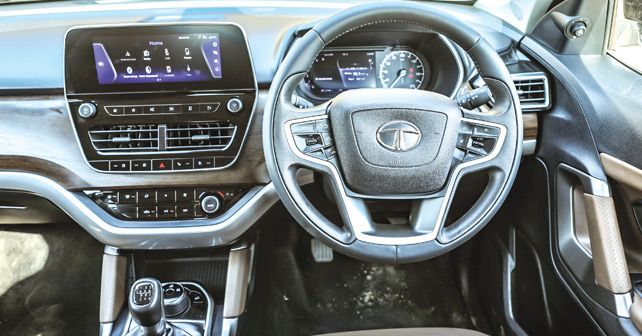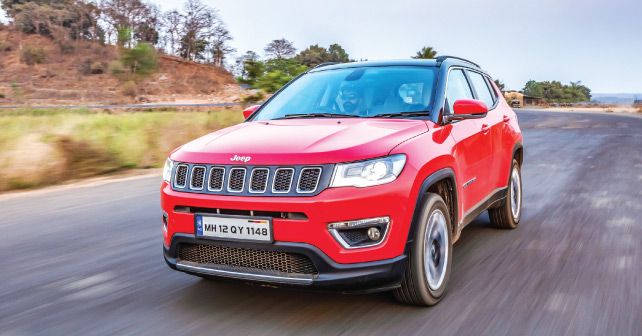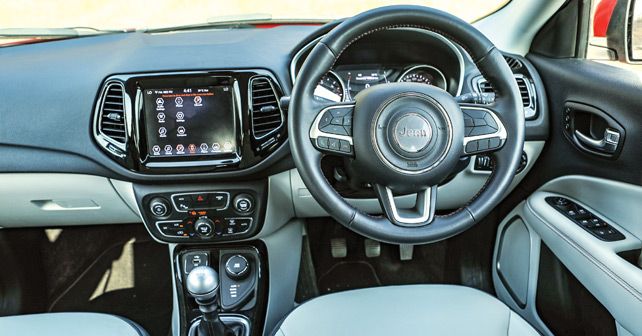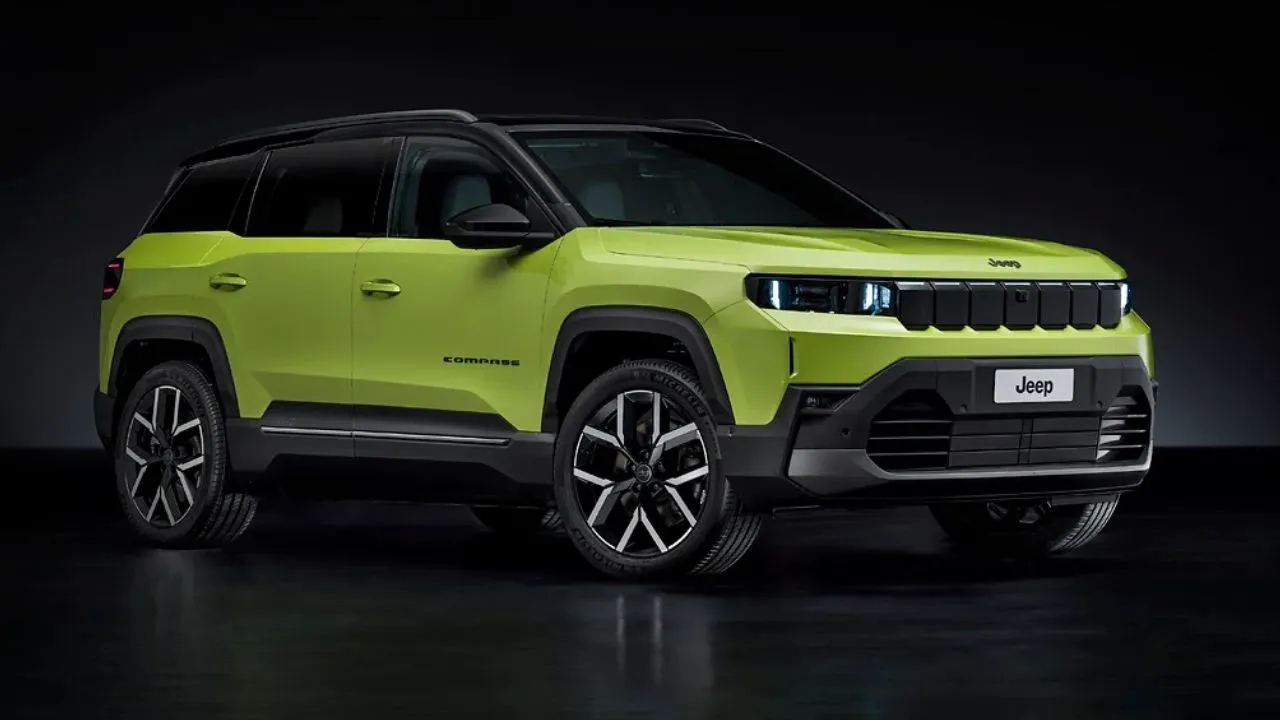Tata Harrier vs Jeep Compass: Comparison
With its Land Rover traits, the Tata Harrier really seems right on the money. But can it match the driving dynamics and the finesse of the Jeep Compass? Let's take them both for a spin to find out.

The Tata Harrier and the Jeep Compass have much in common, but they aren’t without their differences. The question is – which one of these should you put your money on?
Before you start wondering how the front-wheel-drive Harrier, priced at Rs. 16.25 lakh, compares with the all-wheel-drive Compass that’s priced at almost Rs. 23 lakh, let me explain. True, price is one of the main distinguishing factors between the two, but they do have a lot in common too.
To start with, they’re both based on the same engine – a 2.0-litre Fiat-sourced diesel paired with a 6-speed manual transmission. But, more importantly, both cars have very strong underpinnings. The Tata is built on the Omega platform – a derivative of the Land Rover Discovery Sport D8 architecture. The Jeep, on the other hand, uses the Small Wide 4x4 platform, which has proven to be worthy of the brand’s reputation.
We spent some time with these two cars to find the answers to a few questions. First, what do you get, if anything, for the additional price that the Compass demands? Is the Jeep worth the extra money or is the Tata a more reasonable choice? And, lastly, which one of these SUVs should you go for? These are the questions that need answering. So, let’s get on with it.

Size matters
In terms of design, both SUVs have very unique and independent personalities. The Compass has an old-school muscular feel to it – from the vertically stacked grille and squared-off wheel arches to the overall silhouette, everything screams Jeep here. Despite being a few years old, the Compass’s clean and elegant lines haven’t lost their charm. The Tata Harrier, on the other hand, is a perfect example of a modern-day SUV. Its sharp lines, sleek LED DRLs upfront and edgy tail section make it look contemporary and modern.
Both cars look good in their own right. Comparing them is almost like comparing Thor’s well-defined body with the Hulk’s bulk. So, if its size and presence you seek, the Harrier is undoubtedly the one for you.
The Harrier is longer, wider and taller. At 2,741mm, it even has a wheelbase that’s 105mm longer than the Compass. Larger dimensions don’t always translate into a more spacious cabin, but in this case, they do. And while the Compass isn’t exactly constricted, unlike the Harrier, it doesn’t have space in abundance. Let’s just say that the third passenger at the back is sure to be more comfortable in the Harrier. At the front, the Harrier’s seats have superb side bolstering but somewhat lack of under-thigh support. The Compass is quite the opposite – it has a longer seat base and adequate support for the torso as well.

And just like the exterior, the Harrier’s dashboard looks modern and chic. A lot of that has got to do with the layout, especially the large floating touchscreen at the centre. The quality of materials used is better than anything we’ve seen before from Tata, but there are a few bits of hard plastic on the door panels and parts of the steering that could have been better.
The Compass’, although a bit conservative, feels a lot better in its overall layout. There are soft-touch materials all around and the fit-and-finish is superior. The touchscreen of the Compass, however, seems a bit too busy and operating it while driving can be quite distracting.
While the Harrier leaves the Compass behind in terms of presence and spaciousness, the latter bounces back with gusto in terms of features. Both cars come with 6 airbags, ABS, EBD, Stability Control, Hill Hold, Traction Control, and more. The Compass, however, also gets an electronic parking brake, electrically adjustable driver’s seat, sunroof, automatic headlamps and navigation. But, surprisingly, the Jeep misses out on cruise control, something that the Harrier comes with.

Same heart, different beats
Both cars may have the same engine, but they are quite different in the way they perform. The Harrier makes just 138bhp and is the heavier of two – something that’s really apparent when you’re on the move. The engine gains speed reasonably well and can hold 120km/h with ease. However, at higher speeds, you really feel its weight and relatively low power. An overtake on the highway will require a bit of planning and, in some cases, even a downshift.
In all honesty, the Harrier’s engine lacks that sense of urgency. That said, all of its torque is delivered in an extremely linear manner – something that adds to the car’s drivability. While it may not be up there in terms of performance, the Harrier’s clutch action is a lot softer, making it easy to drive in the city. We wish there was more space in the footwell though.
The Compass is not just marginally lighter than the Harrier but also makes more power, making it considerably faster on the move – and overtaking on the highway is a hell of a lot easier. In short, it feels more spirited and eager. Although it makes the same amount of torque as the Harrier, torque here kicks in snappishly – something that will take a little getting used to. The biggest concerns, however, is its heavy clutch action. As a result of which, the Compass isn’t the most relaxed car to drive in bumper-to-bumper traffic.

About-turn
In terms of handling, the balance really sways in favour of the Compass. Its suspension is much better tuned to take on hilly roads. Body roll is superbly controlled, and the steering is perfectly calibrated. It feels direct and weighs up just marginally to be on the heavier side – just the way we like it. Some, however, may not appreciate its weight while driving in the urban jungle. Plus, set up on the stiffer side, the Jeep does throw its passengers around over bad roads, but that’s a reasonable compromise for better high-speed stability and a more confident drive.
The Harrier just doesn’t feel as planted and poised around the bends. In comparison to the Jeep, the suspension is a bit softer. And the lateral movement of the car compromises its balance and stability, and it isn’t the most confidence-inspiring over switchbacks either. The steering feels way too light and disconnected to inspire confidence. On a positive note, the Harrier does, however, ride a lot better over bad roads and absorbs most potholes without an issue. One of our biggest grouses with the Harrier, though, is the poor visibility from behind the wheel. The ORVMs are too large and can easily block a motorcyclist or a pedestrian completely. Also, the shallow rear windshield limits the functionality of the IRVM too.
Cherry picking
The Tata is a much bigger car. It has more presence and a more spacious interior too. And it even feels a lot more comfortable over bad roads. It does, however, fall behind in terms of finesse – not just the engine, but also in terms of fit-and-finish. And, then, there’s the problem of poor visibility and it’s limited dynamic capability. But there’s no denying that it provides great value for your money.
The Compass may demand a huge premium over the Harrier, but for the additional price, you do get more equipment. It gets an electric seat for the driver, a sunroof and, most importantly, a very capable AWD system. It even pips the Harrier in terms of handling. The Jeep offers the right combination of quality, features, driving dynamics and brand image. And it’s our pick between the two for that reason.
Also Read -
Kodiaq vs Tiguan vs Compass vs Hexa vs MU-X vs Endeavour: Comparison
Engine: 1,956cc / 4-Cylinders / 16-Valves / Turbocharged
Fuel: Diesel
Transmission: 6-Speed MT / Front-Wheel Drive
Power: 138bhp @ 3,750rpm
Torque: 350Nm @ 1,750-2,500rpm
Price: ₹16.25 lakh (Ex-showroom, Delhi)
X-factor: If its size, space and value you’re seeking, the Harrier should be your pick.
| Pros • Design • Space • Light clutch | Cons • Build Quality • Brand Perception |








Write your Comment on